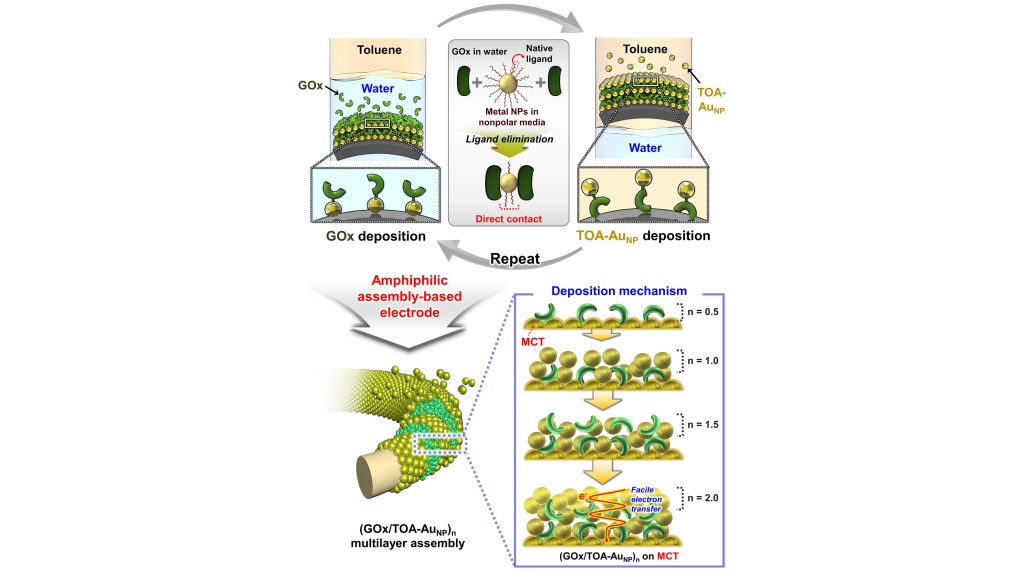From the Journal: Applied Physics Reviews
WASHINGTON, May 24, 2022 — Enzyme electrodes are useful in a range of applications, including biosensing systems and electrochemical devices. Biofuel cells (BFCs) are specially promising candidates for powering a variety of bioelectronic devices by converting biochemical energy into electricity under mild biological conditions.

Despite their characteristics, most biofuel cells provide low power output and short-term operational stability due to their poor electron transfer between enzymes and electrodes and between neighboring enzymes. These electron transfer issues are closely related to the performance of almost all electrochemical sensors, including BFCs and other bioelectronics.
In Applied Physics Review, by AIP Publishing, scientists from Korea and the United States address these shortcomings via an amphiphilic assembly designed to prepare high-performance biofuel cells.
The approach, which can induce favorable interfacial interactions between electrocatalysts and significantly improve the electron transfer kinetics of electrodes, generated hybrid biofuel cells with high power output and good operational stability.
“Our novel electrode design using an amphiphilic assembly, which breaks with the common perspective of enzyme immobilization, can maximize the electron transfer at the enzyme/enzyme and enzyme/electrode interfaces as well as realize high operational stability, inducing the formation of a perfect and nanoblended enzyme layer,” said author Cheong Hoon Kwon.
The method induced favorable interfacial interactions between electrocatalysts and improved electron transfer kinetics of electrodes. It achieved unprecedented mass loading of hydrophilic enzyme and hydrophobic/conductive metal nanoparticles and greatly increased electron transfer efficiency and current density.
Amphiphilic assembled multilayers composed of glucose oxidases in aqueous media and hydrophobic/conductive nanoparticles in nonpolar media were deposited onto cotton fiber/textile to form the anode, which has notably increased electron transfer efficiency and immobilization stability. The cathode was formed by sputtering platinum onto the gold nanoparticle-coated cotton fibrils to improve the efficiency of the oxygen reduction reaction.
The researchers believe the assembly method may provide a basis for preparing a variety of high-performance electrochemical devices, including biofuel cells.
“Our results could be of significant interest to various researchers and engineers working in the areas of self-assembly, energy conversion, and electrochemical sensors, in addition to BFCs,” said Jinhan Cho, a co-author on the paper.
###
For more information:
Larry Frum
media@aip.org
301-209-3090
Article Title
High-performance hybrid biofuel cells using amphiphilic assembly based enzyme electrodes
Authors
Cheong Hoon Kwon, Minchul Kang, Minseong Kwon, Donghyeon Nam, Yongkwon Song, Euiju Yong, Min-Kyu Oh, Yongju Kim, Bongjun Yeom, Jun Hyuk Moon, Seung Woo Lee, and Jinhan Cho
Author Affiliations
Korea University, Hanyang University, Sogang University, Georgia Institute of Technology
